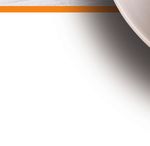Editorials - American Academy of Family Physicians
←
→
Page content transcription
If your browser does not render page correctly, please read the page content below
Editorials
Promoting Safety in Community-Based infections.14 Psychological trauma from previ-
Birth Settings ous birth experiences and/or a history of other
traumatic life experiences may cause a pregnant
Lawrence Leeman, MD, MPH, and person to fear maltreatment or loss of autonomy
Jessica Taylor Goldstein, MD, FAAFP if they give birth in a hospital. Mistreatment in
University of New Mexico School of
labor occurs more often in the hospital setting
Medicine, Albuquerque, New Mexico
compared with home births (28.1% vs. 5.1%).15
See related article on page 672. Systemic racism and the stress it creates account
for some of this difference.16,17 Birth centers sup-
Births outside of the hospital setting are uncom- ported by public funding such as Medicaid, which
mon in the United States;however, since 2004, pays for more than 40% of all births, and a higher
home birth rates have increased by 77%, and proportion of births for persons of color18 may
rates at community birth centers have doubled.1 achieve improved satisfaction with the birthing
Although controversy regarding the safety of experience, lower rates of preterm births and
giving birth outside of the hospital setting con- cesarean deliveries, and lower costs for delivery.19
tinues, professional organizations agree that a The safety of home or birth center birth can
pregnant person has the inherent right to choose be improved by adequate birth attendant train-
where they wish to give birth.2-4 Although stud- ing, access to emergency obstetric care, and
ies of home birth outcomes in the United States careful risk assessment throughout the prenatal
have demonstrated increased perinatal mortal- and intrapartum periods. Certified professional
ity,5,6 data from other high-resource countries midwives should be trained to international stan-
have been more reassuring.7-9 These differences dards and licensed in every state as described in
in perinatal outcomes may be due to a variety the article by Lang and colleagues in this issue
of factors, including inconsistent training stan- of American Family Physician.20,21 Physician con-
dards for U.S. midwives, higher-risk patients sultation can improve prenatal care, assist with
giving birth in U.S. community-based settings,10 risk assessment, and facilitate timely transfer to
and poor integration between U.S. community- hospital care if indicated. Patients’ experiences
and hospital-based maternity care services. during prenatal care or hospital transfer may be
Family physicians can improve perinatal out- adversely affected in some communities by the
comes for births at home and in community unwillingness of community- and hospital-based
birth centers by facilitating access to physician physicians and midwives to collaborate.22
consultation before, during, and after the birth- The AAFP, in collaboration with other profes-
ing process. sional organizations representing obstetrics and
Several prominent news outlets have reported gynecology, midwifery, pediatrics, and patients,
increased interest in home births during the participated in the national Home Birth Sum-
COVID-19 pandemic because many pregnant mits in 2011-2014, which led to the development
patients are afraid of contracting COVID-19 in of model transfer guidelines.23 These guidelines
the hospital.11,12 In response to these concerns, the define the roles of community- and hospital-
American College of Obstetricians and Gynecol- based midwives and physicians to improve
ogists (ACOG), the American Academy of Fam- perinatal outcomes and maternal birth experi-
ily Physicians (AAFP), the American College of ence. Physicians, midwives, and nurses should
Nurse-Midwives, and the Society for Maternal- use terminology free of negative connotations.
Fetal Medicine released a joint statement assert- Describing a pregnant person as a “failed home
ing that hospitals and community birth centers, birth,” for example, is depersonalizing and may
with the appropriate accreditation, are the safest be viewed as judgmental. Labeling certified mid-
places to give birth in the United States.13 wives or certified professional midwives who are
Home births are associated with lower rates not nurses as “lay midwives” is inaccurate and
of obstetric interventions, including cesarean inappropriate. Substituting the term “commu-
delivery, oxytocin augmentation, and episiotomy, nity birth” for “out-of-hospital birth” removes
and with lower rates of obstetric complications the assumption that hospital birthing is norma-
such as anal sphincter lacerations and maternal tive and is preferred.24
650 American
Downloaded Family
from the AmericanPhysician
Family Physician website at www.aafp.org/afp. Copyright © 2021 American Academy ofVolume
www.aafp.org/afp Family Physicians.
103, NumberFor the
11 private,
◆ June noncom-
1, 2021
mercial use of one individual user of the website. All other rights reserved. Contact copyrights@aafp.org for copyright questions and/or permission requests.EDITORIALS
Pregnant patients with a fetus in breech pre- mation on risk status and access to care. Birth. 2016;43(2):
116-124.
sentation near term, a multiple gestation, or a
2. Committee on Obstetric Practice. Committee opinion no.
previous cesarean delivery should be counseled 697:planned home birth. Obstet Gynecol. 2017;1 29(4):
that home birth is not recommended because e117-e122.
of the increased risk of adverse neonatal out- 3. American College of Nurse-Midwives. Midwifery provi-
comes.2,10,25 Many patients in rural areas lack sion of home birth services:American College of Nurse-
Midwives [published correction appears in J Midwifery
access to trial of labor after cesarean (TOLAC), Womens Health. 2016;61(4):538]. J Midwifery Womens
despite AAFP and ACOG efforts to support Health. 2016;61(1):1 27-133.
maternal choice.26,27 Persons deemed ineligible 4. Watterberg K;Committee on Fetus and Newborn. Provid-
ing care for infants born at home. Pediatrics. 2020;145(5):
for maternity care in their local hospital because e20200626.
of a history of cesarean delivery may choose the 5. Cheng YW, Snowden JM, King TL, et al. Selected peri-
increased risk of a local home birth rather than natal outcomes associated with planned home births in
transfer care outside of their community.26-28 the United States. Am J Obstet Gynecol. 2013;209(4):325.
e1-325.e8.
Supporting the options of TOLAC in rural hos-
6. Cheyney M, Bovbjerg M, Everson C, et al. Outcomes of
pitals and planned vaginal breech delivery for care for 16,924 planned home births in the United States:
those who meet criteria may decrease the likeli- the Midwives Alliance of North America Statistics Project,
hood of pregnant persons with these risk factors 2004 to 2009. J Midwifery Womens Health. 2014;59(1):
17-27.
choosing home birth.
7. Brocklehurst P, Hardy P, Hollowell J, et al.;Birthplace in
The proportion of pregnant persons who live England Collaborative Group. Perinatal and maternal out-
in “maternity care deserts” is increasing as rural comes by planned place of birth for healthy women with
maternity care units, or entire hospitals, close.29 low risk pregnancies:the Birthplace in England national
prospective cohort study. BMJ. 2011;3 43:d7400.
For some rural residents, a hospital birth may be 8. de Jonge A, van der Goes BY, Ravelli ACJ, et al. Perinatal
preferred by the patient and/or their clinicians, mortality and morbidity in a nationwide cohort of 529,688
but geographic isolation may limit access. The low-risk planned home and hospital births. BJOG. 2009;
116(9):1 177-1184.
establishment of rural birth centers may improve
9. Hutton EK, Reitsma AH, Kaufman K. Outcomes associated
maternal satisfaction and access to safe care with planned home and planned hospital births in low-risk
for low-risk pregnancies, and decrease obstet- women attended by midwives in Ontario, Canada, 2003-
ric interventions. Education such as AAFP’s 2006:a retrospective cohort study. Birth. 2009;36(3):180-189.
Advanced Life Support in Obstetrics course30 is 10. Bovbjerg ML, Cheyney M, Brown J, et al. Perspectives
on risk:assessment of risk profiles and outcomes among
particularly important for midwives practicing women planning community birth in the United States.
in community birth settings, because they may Birth. 2017;4 4(3):209-221.
encounter complications such as shoulder dys- 11. Ayres-Brown A. Illinois midwives face surge of interest in
tocia and postpartum hemorrhage remote from home birth during coronavirus pandemic. Chicago Tri-
bune. April 22, 2020. Accessed November 15, 2020. https://
physician assistance. www.chicagotribune.com/coronav irus/ct-coronavirus-
Although few physicians in the United States midwives-pregnancy-home-birth-20200422-bi3w x bdg
attend community births, family physicians play ufgdhjlhv6bj2rgk6i-story.html
12. de Freytas-Tamura K. Pregnant and scared of ‘covid hos-
an important role in improving the safety of com- pitals,’ they’re giving birth at home. New York Times. April
munity birthing by offering counseling on the 21, 2020. Accessed November 15, 2020. https://w ww.
choice of birth setting, consultation, and collabo- nytimes.com/2020/04/21/nyregion/coronav irus-home-
births.html
ration during prenatal care, and by facilitating the
13. American College of Obstetricians and Gynecologists,
process of maternal or newborn transfer when nec- American Academy of Family Physicians, American Col-
essary. We encourage family physicians to pursue lege of Nurse-Midwives, Society for Maternal-Fetal Med-
professional training and education on community icine. Patient-centered care for pregnant patients during
the COVID-19 pandemic. March 30, 2020. Accessed
birth to support the shared goal of an empowered November 15, 2020. https://w ww.acog.org/en/News/
and safer birth for every pregnant person. News % 20 R eleases/2020/03/Patient % 2 0 C entered % 20
Care% 20for% 20P regnant % 20P atients% 20D uring% 20t he
Address correspondence to Lawrence Leeman, MD, %20COVID%2019%20Pandemic
MPH, at lleeman@salud.unm.edu. Reprints are not 14. Reitsma A, Simioni J, Brunton G, et al. Maternal outcomes
available from the authors. and birth interventions among women who begin labour
Author disclosure: No relevant financial affiliations. intending to give birth at home compared to women of
low obstetrical risk who intend to give birth in hospital:
a systematic review and meta-analyses. EClinicalMedicine.
References 2020;21:100319.
1. MacDorman MF, Declercq E. Trends and characteristics of 15. Vedam S, Stoll K, Taiwo TK, et al.;GVtM-US Steering Coun-
United States out-of-hospital births 2004-2014:new infor- cil. The Giving Voice to Mothers study:inequity and mis-
June 1, 2021 ◆ Volume 103, Number 11 www.aafp.org/afp American Family Physician 651EDITORIALS
treatment during pregnancy and childbirth in the United 23. Home Birth Summit. Best practice guidelines:transfer
States. Reprod Health. 2019;16(1):7 7. from planned home birth to hospital. 2020. Accessed
16. Rosenthal L, Lobel M. Gendered racism and the sexual December 6, 2020. https://w ww.homebirthsummit.org/
and reproductive health of Black and Latina women. Ethn best-practice-transfer-guidelines/
Health. 2020;25(3):367-392. 24. Cheyney M, Bovbjerg ML, Leeman L, et al. Community
17. Slaughter-Acey JC, Talley LM, Stevenson HC, et al. Per- versus out-of-hospital birth:what’s in a name? J Midwifery
sonal versus group experiences of racism and risk of deliv- Womens Health. 2019;6 4(1):9 -11.
ering a small-for-gestational age infant in African American 25. Cox KJ, Bovbjerg ML, Cheyney M, et al. Planned home
women:a life course perspective. J Urban Health. 2019; VBAC in the United States, 2004-2009:outcomes, mater-
96(2):181-192. nity care practices, and implications for shared decision
18. Martin JA, Hamilton BE, Osterman MJK, et al. Births:final making. Birth. 2015;42(4):299-308.
data for 2018. Natl Vital Stat Rep. 2019;68(13):1-47. 26. King VJ, Fontaine PL, Atwood LA, et al. Clinical practice
19. Urban Institute, Health Management Associates, Ameri- guideline executive summary:labor after cesarean/planned
can Institutes for Research, Briljent. Strong Start for Moth- vaginal birth after cesarean. Ann Fam Med. 2015;13(1):80-81.
ers and Newborns Evaluation:Year 5 Project Synthesis. 27. American College of Obstetricians and Gynecologists.
2018. Accessed November 15, 2020. https://downloads. ACOG practice bulletin no. 205. Vaginal birth after cesar-
cms.g ov/f iles/cmmi/strongs tart-s nhancedp renatalc are ean delivery. Obstet Gynecol. 2019;1 33(2):e110-e127.
models_evalrptyr4v1.pdf 28. Leeman LM, Beagle M, Espey E, et al. Diminishing availabil-
20. Professional Midwives. CPMs:midwifery landscape and ity of trial of labor after cesarean delivery in New Mexico
future directions. A set of briefing papers and recommen- hospitals. Obstet Gynecol. 2013;1 22(2 pt 1):242-247.
dations from NACPM. October 2017. Accessed November 29. March of Dimes. Nowhere to Go:Maternity Care Deserts
15, 2020. https://w ww.nacpm.org/wp-content/uploads/ Across the U.S. 2020 report. Accessed November 15, 2020.
2017/10/4A-Certification-and-a-National-Credential.pdf https://w ww.marchofdimes.org/materials/2020-Maternity-
21. Lang G, Farnell EA IV, Quinlan JD. Out-of-hospital birth. Care-Report-eng.pdf
Am Fam Physician. 2021;103(11):672-679. 30. Advanced Life Support in Obstetrics (ALSO) provider
22. Vedam S, Leeman L, Cheyney M, et al. Transfer from manual. 9th ed. American Academy of Family Physicians;
planned home birth to hospital:improving interprofes- 2020. ■
sional collaboration. J Midwifery Womens Health. 2014;
59(6):624-634.
yC ME
Lear n S e l f - S t ud
AAFP d p ic k a topic.
n
Here a a
b a seat n your schedule.
S im p ly g r
o u r ow n p ace, o
Set y
Ear n a a f p . o r g / CMEse lf-study
Here
652 American Family Physician www.aafp.org/afp Volume 103, Number 11 ◆ June 1, 2021You can also read



























































